| Designation: | Centurion |
 |
|---|---|---|
| Manufacturer: | Vickers Defence Systems Ltd. | |
| Product type: | Armoured Vehicles | |
| Name: | Main battle tank |
In 1943, the Department of Tank Design was asked to start design work on a new heavy cruiser tank under the designation A41. This tank was required to have good armour protection, be armed with a 17-pounder gun and have a good cross-country performance: a high road speed was not considered essential at that time. The first mock-up of the A41 was completed in 1944 and six prototype tanks were completed in early 1945. These were sent to Germany but arrived too late to see any combat. The A41 later became known as the Centurion Mk 1 and the up-armoured A41A became the Centurion Mk 2, both armed with the 17-pounder gun. Throughout its life the Centurion has proved capable of being up-armoured and up-gunned. It was originally armed with the 17-pounder which was replaced first by the 20-pounder and finally by the 105 mm L7 series rifled gun which was subsequently adopted by many other countries. Other improvements carried out during its life included increased fuel capacity, contrarotating commander's cupola and improved stowage. All British models of the tank used the same basic Meteor petrol engine and transmission.
Production of the Centurion was undertaken by the Royal Ordnance Factories at Leeds and Woolwich, Vickers at Elswick and Leyland Motors at Leyland. Most were built at Leeds and Elswick. Production of the Centurion was finally completed in 1962, by which time 4,423 tanks had been built, of which at least 2,500 were exported.
In the British Army the Centurion was replaced from the late 1960s by the Chieftain MBT. By 1999, Sweden remained the only user of the Centurion MBT in Europe.
The all-welded steel hull of the Centurion is divided into three compartments: driving at the front, fighting in the centre, and engine and transmission at the rear.
The driver sits at the front of the hull on the right side and has two hatch covers that open either side of his position, each with a periscope. To the left of the driver a quantity of ammunition is carried.
The turret in the centre of the hull is of cast construction with the roof welded into position. There is an ammunition resupply hatch mounted externally in the left side of the turret and stowage boxes on either side of the turret. Most vehicles have a wire stowage rack at the rear of the turret. The loader is seated on the left of the turret, the commander on the right, and the gunner in front of and below the commander.
The commander's cupola can be manually traversed through 360° by hand and is provided with split hatches, a periscopic sight with a ballistic pattern and seven periscopes for all-round observation. A searchlight mounted at the commander's station can be fitted with an infra-red filter. The gunner has a periscopic sight with ballistic pattern graticule, linked to a range drum for targets between 3,000 and 8,000 m. The commander's and gunner's sights are linked by a heat-compensated bar.
The loader is provided with twin hatch covers that open front and rear and a single observation periscope.
The engine compartment at the rear is separated from the fighting compartment by a fireproof bulkhead. Air is drawn in through the engine deck louvres by two fans. Power is transmitted from the engine through the clutch to the transversely mounted Merritt-Brown Z51R transmission. This is a combined change-speed and steering mechanism and incorporates a differential. Drive from the output epicyclic gears at each end of the gearbox is transmitted through an internally toothed coupling ring and an externally toothed driving shaft to the final drive.
The Horstmann suspension consists of three units on each side, each carrying two pairs of roadwheels sprung by one set of concentric springs. The first and last roadwheel units are fitted with shock-absorbers. The drive sprocket is at the rear, idler at the front and there are six track-return rollers, the four dual roller centre ones and the single front and rear ones which support the inside of the track only. The tops of the cast manganese steel tracks are covered by removable armour skirts which provide protection against HEAT projectiles.
As originally built the Centurion was not fitted with any infra-red night vision equipment, but in the 1960s many British Army Centurions were fitted with infra-red driving lights, an infra-red searchlight to the left of the main armament and infra-red sights for both the commander and gunner. The tank has no NBC system or amphibious capability although a deep fording kit was developed. A dozer blade can be mounted at the front of the hull for clearing obstacles and preparing fire positions. One of the shortcomings of the Centurion was its short operational range, although later production tanks had increased fuel capacity and the Mk 5 could tow a monowheel trailer full of fuel to increase its operational range.
Main armament of the Centurion Mk 13 is the Royal Ordnance 105 mm L7A2 rifled tank gun which is provided with a fume extractor, and many countries have fitted a thermal sleeve. It has an effective range of 1,800 m with APDS-T rounds or between 3,000 and 4,000 m using HESH. A well-trained crew can fire 8 rds/ min.
The weapon is normally aimed using a 12.7 mm (0.50) ranging machine gun mounted coaxially with the main armament which has a maximum range of 1,800 m and fires in three-round bursts using tracer ammunition. The gun is fully stabilised and the gunner can select any one of the following modes of operation: manual elevation and traverse, non-stabilised power traverse, stabilised powered elevation and traverse or emergency, single-speed power traverse.
The 105 mm gun fires the following types of ammunition, all of which are of the fixed type with the projectile securely attached to a brass cartridge case which contains the propellant and initiated by an electric primer: APDS-T (L28A1), APDS-T (L52A1), APFSDS-T (L64 and later developments), DS/T (L45A1), HESH (L37) and Smoke (L39), all manufactured by Royal Ordnance. It will also fire ammunition manufactured by many other countries such as Austria, Canada, France, Germany, Israel and the USA.
Mounted coaxially to the left of the main armament is a 7.62 mm (0.30) machine gun and there is a similar weapon on the commander's cupola for anti-aircraft use. Six electrically operated smoke grenade dischargers are mounted either side of the turret.
There have probably been more variants of the Centurion than any other post-Second World War vehicle in the MBT class. A full list of the gun tank models and variants of the vehicle still in service follows; experimental vehicles have been excluded.
Centurion Mk 1 armed with 17-pounder (76.2 mm) gun;
none remains in service.
Centurion Mk 2 armed with 17-pounder gun; none
remains in service.
Centurion Mk 3 armed with 20-pounder(83.8 mm) gun;
none remains in service, most brought up to Mk 5
standard.
Centurion Mk 4 was to have been a close support
model armed with 95 mm howitzer but was not placed
in production.
Centurion Mk 5 was designed by Vickers at Elswick and
armed with a 20-pounder gun.
Centurion Mk 5/1 is Mk 5 up-armoured.
Centurion Mk 5/2 is Mk 5 with a 105 mm gun.
Centurion Mk 6 is a Mk 5 up-armoured, with additional
fuel capacity at rear of hull and 105 mm gun.
Centurion Mk 6/1 is a Mk 6 with infra-red night vision equipment and stowage basket at rear of turret. Centurion Mk 6/2 is Mk 6 with 12.7 mm ranging machine gun for 105 mm gun.
Centurion Mk 7 was designed by Leyland and is designated the FV4007. Armed with a 20-pounder gun with fume extractor and carries 61 rounds of 20-pounder ammunition.
Centurion Mk 7/1 is a Mk 7 up-armoured and designated FV4012.
Centurion Mk 7/2 is a Mk 7 with a 105 mm gun. Centurion Mk 8 was developed from the Mk 7 and has a resiliently mounted gun mantlet with no canvas cover and the commander's cupola is contrarotating. The commander can also raise his twin hatch covers in an umbrella fashion for improved visibility without revealing his position. Centurion Mk 8/1 is Mk 8 up-armoured. Centurion Mk 8/2 is Mk 8 with 105 mm gun. Centurion Mk 9 is Mk 7 up-armoured and up-gunned with 105 mm gun, designated the FV4015. Centurion Mk 9/1 is Mk 9 with infra-red night vision equipment and stowage basket on rear of turret. Centurion Mk 9/2 is Mk 9 with 12.7 mm ranging machine gun.
Centurion Mk 10 is Mk 8 up-armoured, up-gunned with 105 mm gun and with an ammunition capacity of 70 rounds, designated the FV4017. Centurion Mk 10/1 is Mk 10 with infra-red night vision equipment and stowage basket on rear of turret. Centurion Mk 10/2 is Mk 10 with 12.7 mm ranging machine gun.
Centurion Mk 11 is Mk 6 with ranging machine gun, infra-red night vision equipment and stowage basket on turret rear.
Centurion Mk 12 is Mk 9 with infra-red night vision equipment, 12.7 mm ranging machine gun and stowage basket on turret rear.
Centurion Mk 13 is Mk 10 with 12.7 mm ranging machine gun and infra-red night vision equipment.
- Centurion (Mk 2) ARV (FV4006)
The Mk 2 was preceded by the Mk 1 ARV but none remains in service. The ARV Mk 2 is essentially a Centurion MBT with its turret removed and replaced by an all-welded superstructure behind the driver's position. The commander's cupola can be traversed through 360° and is fitted with a 7.62 mm (0.30) machine gun. Mounted at the rear of the hull are spades which are used to stabilise the vehicle when the winch is being used. The winch's 31,000 kg capacity can be increased with the aid of snatch blocks to a maximum of 90,000 kg. The vehicle has a loaded weight of 50,295 kg and a crew of four. Full details of the Centurion ARV Mk 2 were given in Jane's Military Vehicles and Logistics 1995-96, page 49. All Centurion Mk 2 ARVs were built by Vickers Defence Systems at Newcastle-upon-Tyne, with 345 being built between 1954 and 1959.
- Centurion BARV (FV4018)
This is used only by the British Army and only 12 were built for use by amphibious forces. It is basically a Centurion tank with its turret replaced by a superstructure enabling it to operate in water up to 2.895 m deep. It has a crew of four, one of whom is a trained diver. Loaded weight is 40,643 kg. Full details of the Centurion BARV were given in Jane's Military Vehicles and Ground Support Equipment 1987, page 48. There are a total of five BARVs still operational, three at the Amphibious Trials and Training Unit, Royal Marines, one on board HMS Fearless or HMS Intrepid and one in reserve at Ashchurch. There is a requirement for a new BARV.
- Austrian Centurions
For some years Austria has been using Centurion 105 mm, M47 and Charioteer turrets in the static defence role, and purchased 120 Centurions from the Netherlands at £3,800 each for static defence use. A photograph of the Austrian static Centurion 105 mm turret appears in the Coastal artillery guns and missiles (including fixed fortification weapons) section later in this book.
- Israeli Centurions
Details of Israeli Centurion MBTs are given in this section under Israel. Details of their armoured personnel carrier versions are given in the Armoured personnel carriers (tracked) section under Israel.
- Jordanian Centurions
Centurions of the Jordanian Army have been refitted with the American General Dynamics Land Systems, Muskegon Operations AVDS-1970 series diesel engine in place of the original Meteor petrol engine. These upgraded vehicles are called the Tariq. They have also been fitted with a Belgian SABCA fire-control system which incorporates a laser range-finder manufactured under licence from the Hughes company of the USA. This system is similar to the SABCA fire-control system installed in the Leopard 1 MBTs used by Australia, Belgium and Canada. They have also been fitted with a US HR Textron turret drive and stabilisation system and hydropneumatic suspension. The last of 293 conversions to the Tariq standard was completed in 1985.
In early 1986, Kidde-Graviner of the UK was awarded a contract by Jordan to supply its Crew Bay fire and explosion suppression system for installation in all Jordanian Army Khalid, Tariq and M60A1/M60A3 MBTs plus the ENGESA EE-11 Urutu (6x6) APCs which were delivered in 1987.
These will be replaced in the nearfuture by ex-British Army Challenger 1 MBTs under a deal signed early in 1999.
- Singaporean Centurions
It is believed that Singapore has a minimum of 12 Centurions, six of which are based in Brunei and six in Taiwan. All of these have 105 mm guns and new diesel engines. Some reports indicate that Singapore may have as many as 63 Centurion MBTs.
- South African Centurions
Details of the extensive improvements carried out by South Africa to its Centurion MBTs, now called the Olifant.
- Swedish Centurions
Late in 1981, the Swedish FMV awarded a contract worth some SKr150 million to Bofors for the upgrading of the Swedish Centurion Strv 101 and 102 MBTs.
The programme was carried out in two stages covering firepower and mobility. The first retrofitted vehicle was delivered to the Swedish Army early in 1983. This contract covered the following:
(1) A new fire-control system from Bofors Aerotronics based on its export version computer. New gun-control equipment, including solid-state amplifiers, a gyro unit and new gunner's and commander's control handle.
(2) A new gunner's day sight incorporating a laser range-finder and spot injection unit was provided by Ericsson.
(3) A modified cupola retaining the existing commander's sight but including an armoured hood to provide protection when observing head-out.
Bofors provided the Lyran twin launcher for the 71 mm illuminating system with a range of 1,300 m.
Late in 1982, the Swedish Army placed an order worth some SKM80 million with Allison (CD-850-6A automatic transmission) and General Dynamics Land Systems (previously Teledyne Continental) AVDS-1790-2DC diesel engine for subsystems to be used in the Strv 101 and Strv 102 Centurion MBTs. Chassis conversion work was carried out by Hag'glunds Vehicle. Integration of the chassis and turret took place at a Swedish government arsenal in southern Sweden. It is believed that about 80 of the Swedish Army's Centurion MBTs were fitted with a new diesel power pack.
Early in 1989, the Swedish Army took delivery of its first Swedish-made mineclearing roller systems which can be fitted to both the Centurion and S-tanks. This is called the Mine Roller I with the Coupling 1 linking the system to the Centurion and Coupling 2 linking the system to the Strv 103B/C or S-tanks. The overall weight of the mineclearing roller is 6,000 kg while the coupling weighs 1,000 kg. The system can be fixed to the vehicle in 30 to 40 minutes and it is usually used at a speed of 8 to 15 km/h. Full details of this are given in Jane's Military Vehicles and Logistics 1999-2000, page 264.
Early in 1985, the Swedish armed forces successfully completed trials of a Centurion MBT with the British Hydrostrut suspension system which has been developed jointly by Air-Log and the now Vickers Defence Systems Leeds and has also been tested on a British Army Chieftain MBT. The Hydrostrut suspension system can be retrofitted to any existing Centurion in one day and no modification to the hull is necessary.
With the introduction of the Leopard 2 and the later Leopard 2A5 MBTs all of the S-tanks and most of the Centurion tanks will be phased out of service with the Swedish Army. It is expected that a number of the Centurion tanks will be deployed on Gotland island in the Baltic Sea.
- Canadian Centurions
Canada bought enough Centurions to fill 3 regiments in Canada and one in Germany they were used till the mid 70's when they were replaced by the Leopard C1 MBT. That converts to about 60 tanks per regiment plus spares.
Many of the tanks were sold to Israel which converted them to diesel.
Production complete.
|
|||||||||||||||||||||||||||
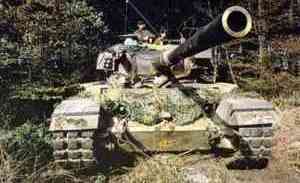 |
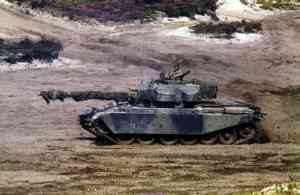 |
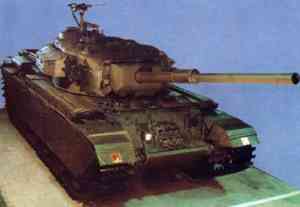 |
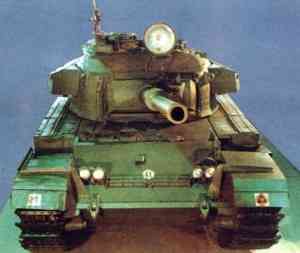 |
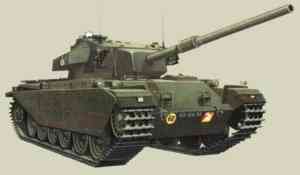 |
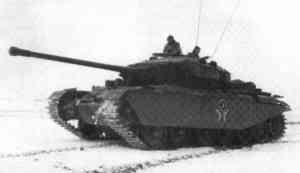 |
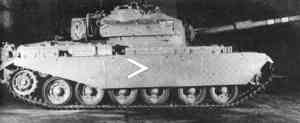 |
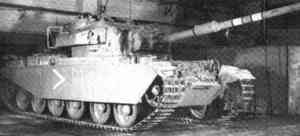 |
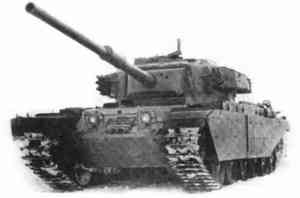 |
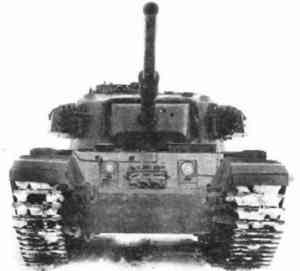 |
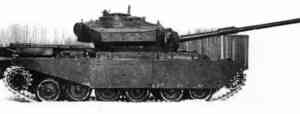 |
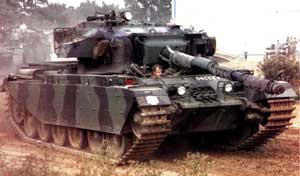 |
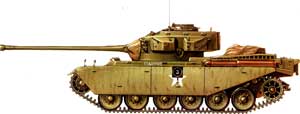 |
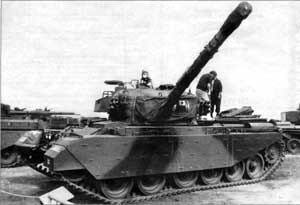 |





